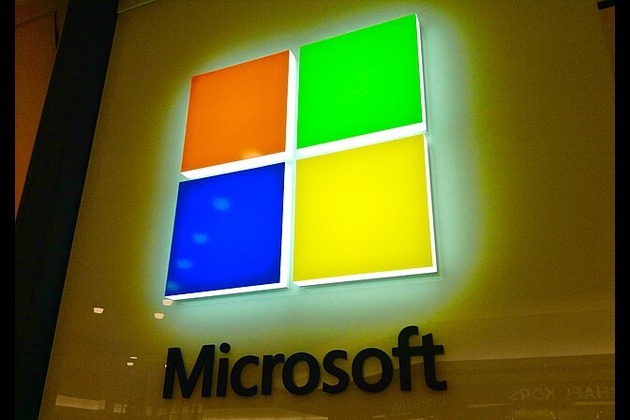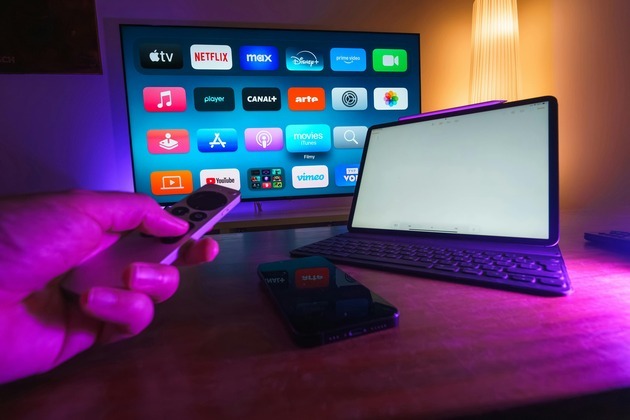How to Monitor Your Employees without Breaking the Workplace
7Newswire
25 Nov 2022, 17:21 GMT+10

Employee monitoring is one of the topics that many business leaders do not like discussing. However, it is a conversation that needs to be had because it can have serious consequences for a business. If it is done right, monitoring can improve relations and productivity while reducing absenteeism. Done wrong, and employee monitoring can introduce mistrust and demotivation and lead to a decline in productivity. Employee monitoring is a lot more challenging than most people imagine due to its precarious nature. This article will give you some tips and strategies you can use to get it right.

Choose Your Tracking Metrics
The technology available today allows you to track numerous metrics about an employee. Collecting data so broadly leads to a problem where you collect so much data that you are not able to use it effectively. This strategy could also lead to unnecessary surveillance that breeds more problems than it solves.
Additionally, collecting too little data could lead to an issue where you make judgments and decisions without understanding the whole picture because your data is not showing it to you.
These reasons illustrate why it is important to choose your metrics carefully before you start employee monitoring. Think about what is relevant and necessary and avoid collecting data that is irrelevant to productivity, revenue, efficiency, or other aims you wish to achieve.
Determining the right metrics starts with involving all relevant parties and stakeholders. This includes everyone from hiring managers to supervisors and employees who you will be monitoring.
Ensure that you engage both experienced and new employees as both will have a different view of monitoring and what metrics you should be monitoring and tracking.
Be Transparent and Involve Your Employees
Open communication is critical, especially if you would like to foster a positive workplace where everyone trusts and respects each other. No one wants to feel like they are being spied on, and this is why you should be transparent and involve your employees before you start monitoring them.
Start by telling your employees what you will monitor. Perhaps you are monitoring how many tasks they complete in a given time or how much time they spend on specific tasks. Let them also understand why you are monitoring them. You could be using employee monitoring in the workplace to boost motivation and productivity, ensure deadlines are met, plan resources effectively and make them available to employees who need them, cut costs, or manage remote workers.
Once you have presented all this information, let employees provide feedback. They could understand the reasons for doing this but have important pointers on how to go about it better, so it benefits everyone more. Also, share all monitoring data with them and provide opportunities to review the data and appeal any decisions based on the collected data that could affect their career.
Remember that transparency increases acceptance rates while secrecy breeds mistrust and suspicion.
Navigate Conversations Properly
Employees waste about 2.9 hours every day on non-work activities. A lot of this time is spent on social media and websites not related to their work. Your monitoring will show this, and you will need to confront your employees about it.
It is very important that you navigate this conversation without delving into their personal matters or what they are doing unless it is illegal, breaks employee conduct, or breeds other problems for the business. Instead, let them know that they should limit and eliminate the number of hours they spend on non-work activities.
Let them know that they can delve into other activities during their breaks. Having these conversations in a sensitive manner, with the exception being repeated breaking of these rules, can lead to better outcomes.
Only Monitor Business Activity
Businesses have no jurisdiction over what their employees do when they are not at work or when they are not supposed to be working. Business leaders and managers should turn monitoring software off when the employee leaves the office or at specific times. Remember that interfering with your employee's private life is unethical, bad form, and illegal in many jurisdictions.
Also, each activity that raises a red flag should be considered within its context. For example, a social media manager who spends six hours on different social media platforms should not raise any issues, but an employee who works in the field should not be doing the same.
Think of Monitoring as a Tool for Recognition and Reward
Monitoring is often tied to bad people who are concerned with submission and compliance. These feelings are what lead to the suspicion and mistrust we have discussed above. To dissuade this notion, think of your monitoring solution as a tool.
You can use this tool to recognize the efforts of different employees and to read them for their actions. This will require that you start thinking of the types of rewards that your employees can appreciate and that can motivate them and improve relevant metrics. This is different from thinking about and using monitoring software and the collected metrics as a way to "punish" employees to discourage inefficiencies.
Put the Numbers and Data into Context
Monitoring software will give you numbers that you can use to base your decisions, but it will not tell you the stories of the people behind those numbers. Good and hardworking employees might not be doing their best at the time due to personal circumstances. Putting their numbers into context and understanding the person beside the number will help you make much better use of your monitoring software.
Doing so will also ensure you do not let go of good people who you would like to keep just because some metrics and numbers show you that they are not doing their best at this time. Try to see the long-term value of these employees to see if they are people you would like to keep despite what the numbers say. Also, keep the conversations focused on solutions instead of threats as that is the better way to get what you want.
Employee monitoring has numerous benefits, but it can break your business if not used eight. Ensure you are tracking the right metrics, have your employees on board, and use the data to develop solutions instead of pushing your employees which will turn them against you.
 Share
Share
 Tweet
Tweet
 Share
Share
 Flip
Flip
 Email
Email
Watch latest videos
Subscribe and Follow
Get a daily dose of Oakland Times news through our daily email, its complimentary and keeps you fully up to date with world and business news as well.
News RELEASES
Publish news of your business, community or sports group, personnel appointments, major event and more by submitting a news release to Oakland Times.
More InformationUnited States
SectionAI saves $500 million for Microsoft as layoffs reshape strategy
REDMOND, Washington: Artificial intelligence is transforming Microsoft's bottom line. The company saved over US$500 million last year...
CDC: US records 1,288 measles cases, most since 1992 outbreak
ATLANTA, Georgia: The United States is facing its worst measles outbreak in more than three decades, with 1,288 confirmed cases so...
FTC’s rule to ease subscription cancellations struck down by court
WASHINGTON, D.C.: A federal rule designed to make it easier for Americans to cancel subscriptions has been blocked by a U.S. appeals...
Ex-UK PM Sunak takes advisory role at Goldman Sachs
NEW YORK CITY, New York: Former British prime minister Rishi Sunak will return to Goldman Sachs in an advisory role, the Wall Street...
Travelers can now keep shoes on at TSA checkpoints
WASHINGTON, D.C.: Travelers at U.S. airports will no longer need to remove their shoes during security screenings, Department of Homeland...
Gold ETF inflows hit 5-year high as tariffs drive safe-haven bets
LONDON, U.K.: Physically backed gold exchange-traded funds recorded their most significant semi-annual inflow since the first half...
International
SectionCDC: US records 1,288 measles cases, most since 1992 outbreak
ATLANTA, Georgia: The United States is facing its worst measles outbreak in more than three decades, with 1,288 confirmed cases so...
Gaza War sucking life out of an Israeli generation
In the past month alone, 23 Israeli soldiers have been killed in Gaza—three more than the number of remaining living hostages held...
Faulty IT system at heart of UK Post Office scandal, says report
LONDON, U.K.: At least 13 people are believed to have taken their own lives as a result of the U.K.'s Post Office scandal, in which...
Travelers can now keep shoes on at TSA checkpoints
WASHINGTON, D.C.: Travelers at U.S. airports will no longer need to remove their shoes during security screenings, Department of Homeland...
Rubio impersonator used AI to reach officials via Signal: cable
WASHINGTON, D.C.: An elaborate impersonation scheme involving artificial intelligence targeted senior U.S. and foreign officials in...
Warsaw responds to migration pressure with new border controls
SLUBICE, Poland: Poland reinstated border controls with Germany and Lithuania on July 7, following Germany's earlier reintroduction...











